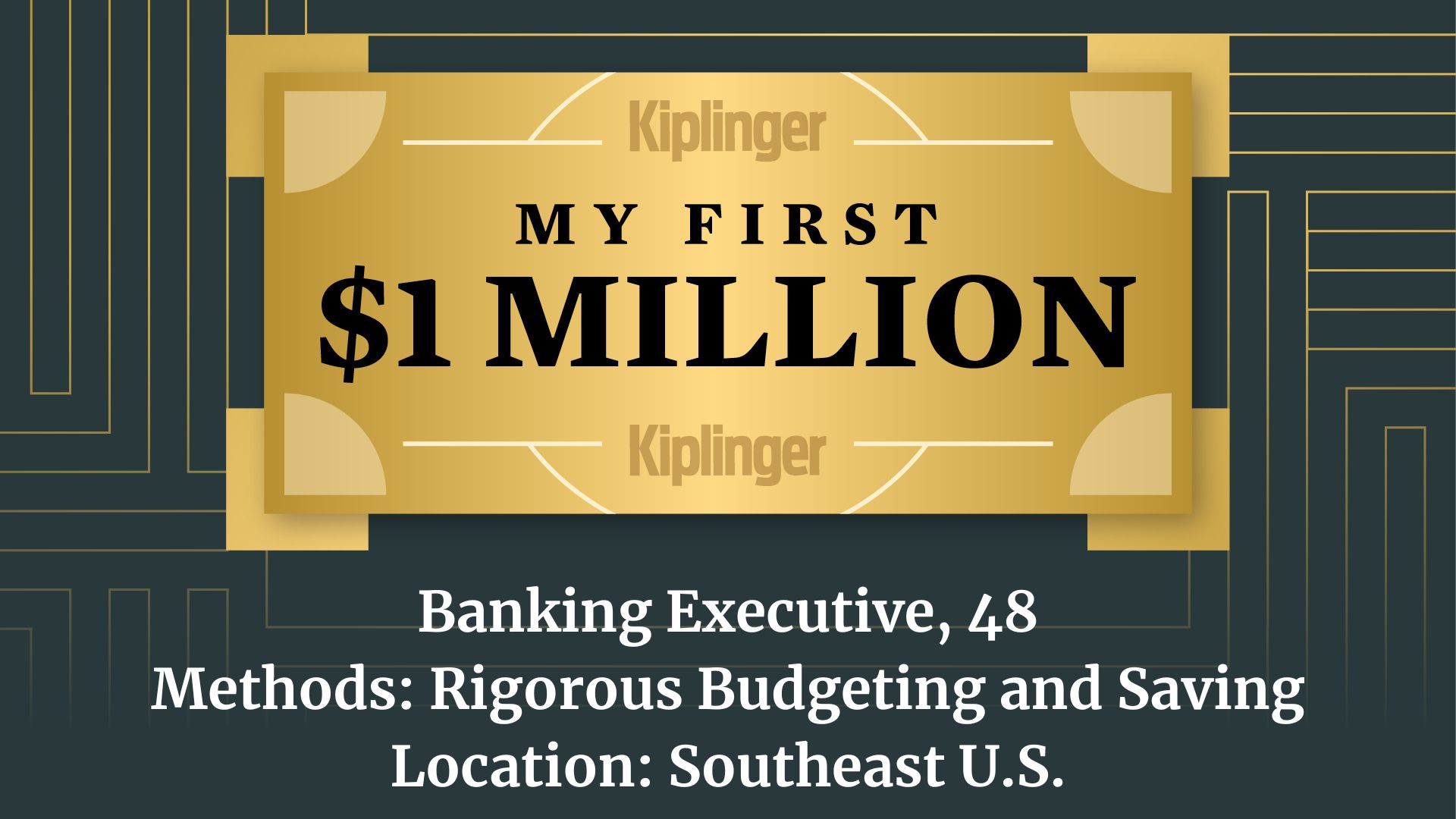How to Shop Smarter as Tariffs Drive Up Prices in 2025
Tariff fatigue is real. Here’s how to save as prices rise and uncertainty grows.


Since Trump began introducing tariffs on goods imported from countries like China and Canada, consumers have seen prices steadily climb.
The ongoing policy shifts have made it difficult for shoppers and retailers alike to plan ahead. The result is what economists are calling tariff fatigue: a gradual dip in consumer spending as frustrated shoppers pull back, delay purchases or forgo them altogether.
Even if you're not tracking trade policy, these tariffs may already be affecting your day-to-day spending in ways you haven't noticed.
From just $107.88 $24.99 for Kiplinger Personal Finance
Become a smarter, better informed investor. Subscribe from just $107.88 $24.99, plus get up to 4 Special Issues

Sign up for Kiplinger’s Free Newsletters
Profit and prosper with the best of expert advice on investing, taxes, retirement, personal finance and more - straight to your e-mail.
Profit and prosper with the best of expert advice - straight to your e-mail.
How tariff fatigue is shaping consumer spending
U.S. tariffs in 2025 have been confusing, to say the least. Retailers have slashed orders from China amid ongoing trade uncertainty, sparking warnings of bare shelves and even rumors of a potential toy shortage this holiday season. Prices are already climbing, and retailers like Walmart and Amazon have acknowledged price increases.
According to the U.S. Census Bureau, tariff fatigue is setting in and contributing to a decline in consumer spending. Retail and food services sales dropped 0.9% in May compared to April, which itself saw a 1% decline from March.
While the decreases may seem modest, they suggest that American consumers are beginning to pull back, and steeper tariffs could lead to even greater cutbacks in the months ahead.
How consumers are responding to U.S. tariffs in 2025
A Numerator Tariff Impact Survey, which was conducted in April, identified how consumers are changing their buying behavior because of the tariffs. The survey found that 83% of shoppers planned to make changes to their finances or shopping behaviors.
Among those changes, 43% of respondents look for sales or coupons to help offset price increases, and 32% of respondents planned to delay making a purchase until after the prices stabilize.
Additionally, 32% of respondents planned to buy fewer imported goods, while 25% planned to buy U.S.-made alternatives to the products they normally used.
How to cope with tariff uncertainty

The back-and-forth nature of the tariffs has made it difficult for consumers to plan their shopping and strategically respond.
While tariff fatigue might have you feeling frustrated and wanting to cut back on your shopping, there are still ways to save money and get the best deals during your summertime shopping.
- Stock up. Given the uncertainty of Trump’s approach to the tariffs, it’s possible that he might implement more or higher tariffs this summer that could drive up prices in the fall. If you know you’ll need to buy certain items, like school supplies or a new computer, it could pay off to stock up now to avoid any higher prices later on.
- Buy used. Consider heading to your local consignment shop for clothing purchases, or shop on Facebook Marketplace for local deals on items. You can also find deals on thrifting websites like Poshmark and ThredUp, though shipping costs will reduce your savings.
- Look for sales. Many retailers hold summer sales, especially around holidays like the Fourth of July. Amazon Prime Day will take place from July 8 through July 11 this year, and you may be able to find good tech deals. As sales approach, do some comparison shopping to determine which retailer offers the best deals on the products you need.
- Use shopping apps. Many shopping apps can help you find the best deals or even earn money back on your purchases, which can help offset higher product prices. For example, you can earn rewards for scanning your store receipts on Receipt Hog, while Ibotta provides cashback rewards on purchases from specific retailers. Don’t forget to also sign up for your local grocery stores’ apps, which you can use to download coupons and take advantage of store sales.
- Use a rewards credit card. Depending on your credit score, you may be able to open a rewards credit card to earn cash back on common purchases like groceries and gas. These rewards can quickly add up and can help you save money over time. When applying for a card, consider whether you’ll need to pay an annual service fee, and look for any other hidden fees. Review the interest rate and pay off your balance monthly to avoid paying interest.
Bottom Line
While you can’t control tariffs or their impact on prices, you can take steps to shop strategically. Cutting back on spending is one way to save, but there are also smart strategies that can help you get the products you need without overspending.
From timing your purchases around major sales to using cashback apps and rewards credit cards, small adjustments can add up to meaningful savings. In a time of rising costs and uncertainty, being a more intentional shopper can help you stay ahead.
Related content
Profit and prosper with the best of Kiplinger's advice on investing, taxes, retirement, personal finance and much more. Delivered daily. Enter your email in the box and click Sign Me Up.

Paige Cerulli is a freelance journalist and content writer with more than 15 years of experience. She specializes in personal finance, health, and commerce content. Paige majored in English and music performance at Westfield State University and has received numerous awards for her creative nonfiction. Her work has appeared in The U.S. News & World Report, USA Today, GOBankingRates, Top Ten Reviews, TIME Stamped Shopping and more. In her spare time, Paige enjoys horseback riding, photography and playing the flute. Connect with her on LinkedIn.
-
 You've Built Your Estate Plan — Now Put It to Work
You've Built Your Estate Plan — Now Put It to WorkYou need to share details with your family (including passwords and document locations) and stay focused on keeping your plan up to date.
-
 10 Strategies to Help Women on Their Way to Financial Power
10 Strategies to Help Women on Their Way to Financial PowerAs women gain wealth and influence, being proactive about financial planning is essential to address longevity and close gaps in confidence and caregiving.
-
 CD Maturing Soon? Here's What to Do Next
CD Maturing Soon? Here's What to Do NextThese strategies of what to do when you have a CD maturing soon will have you maximizing returns even with rate cuts.
-
 Do You Have a CD Maturing Soon? Here's What to Do Next
Do You Have a CD Maturing Soon? Here's What to Do NextThese strategies of what to do when you have a CD maturing soon will have you maximizing returns even with rate cuts.
-
 How to Open and Maintain an Online Savings Account Safely
How to Open and Maintain an Online Savings Account SafelyOnline banks offer generous APYs that most brick-and-mortar banks can't match. If you want to make the switch to online but have been hesitant, I'll show you how to do it safely.
-
 My First $1 Million: Banking Executive, 48, Southeast U.S.
My First $1 Million: Banking Executive, 48, Southeast U.S.Ever wonder how someone who's made a million dollars or more did it? Kiplinger's My First $1 Million series uncovers the answers.
-
 Time to Close the Books on 2025: Don't Start the New Year Without First Making These Money Moves
Time to Close the Books on 2025: Don't Start the New Year Without First Making These Money MovesAs 2025 draws to a close, take time to review your finances, maximize tax efficiency and align your goals for 2026 with the changing financial landscape.
-
 Premium Rewards Cards: More Perks, Higher Fees
Premium Rewards Cards: More Perks, Higher FeesSome issuers are hiking the annual fee on their flagship luxury credit cards by hundreds of dollars. Are they still worth using?
-
 3 Trips to Escape the Winter Doldrums, Including An Epic Cruise
3 Trips to Escape the Winter Doldrums, Including An Epic CruiseThree winter vacation ideas to suit different types of travelers.
-
 4 Financially Savvy Things to Do with Unwanted Gifts
4 Financially Savvy Things to Do with Unwanted GiftsDon't send that unwanted gift to the landfill. Find a way to squeeze out some of its cash value instead.
-
 I'm an Insurance Expert: Sure, There's Always Tomorrow to Report Your Claim, But Procrastination Could Cost You
I'm an Insurance Expert: Sure, There's Always Tomorrow to Report Your Claim, But Procrastination Could Cost YouThe longer you wait to file an insurance claim, the bigger the problem could get — and the more leverage you're giving your insurer to deny it.